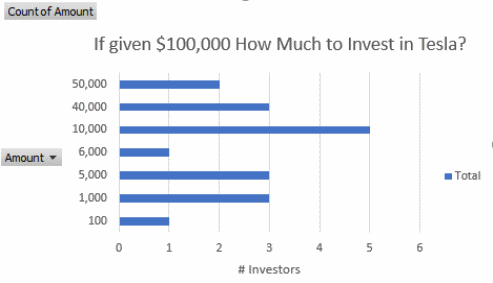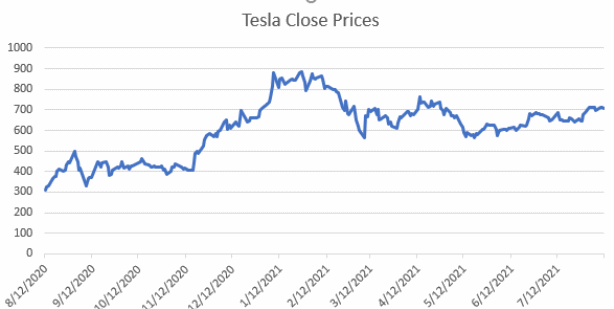Marketing Mix
Tesla’s marketing strategy has provided the company with a competitive advantage while enabling it to attain its business objectives. The company’s product strategy is tuned into innovation, technology, and alternative energy sources to prevent environmental damage. A concept that has been highly embraced by consumers all over the world. Tesla’s product strategy is customer-centric through its ability to provide alternative energy sources for absolutely eco-friendly cars (Vishnoi et al. 171). The considerable material, research, and development costs can reflect the pricing mix. In addition to that, the company uses a market-oriented pricing strategy in marketing solar panels through SolarCity, its subsidiary.
The company’s place or distribution strategy is to conquer challenges through acquisitions and new ventures. Having its headquarter located in Palo Alto, California, the company works to increase its production rate and timely delivery. From its headquarters, Tesla can reach consumers through its free media promotion strategy, which employs manufacturing interesting products that receive free publicity (ThoughtCatalyst 3:18-3:20). In addition, the company continues to add more venues and places as it expands, including charging stations, official, company-owned service centers, the official company website, and company-owned stores and galleries. These are necessary to facilitate its product mix where the company engages in energy storage, energy generation, and automotive markets—presenting products such as automobiles, electric vehicle powertrain components, batteries, and solar panels.
Major Product Lines
Tesla’s main products include automobiles, solar panels, electric vehicle powertrain components, batteries, energy storage, and synthetic fiber products. The company is a renowned manufacturer of premium eco-friendly and battery-powered electric cars, although its main product is electric sedans. Tesla’s Model S sedan is the world’s popular electric car with automation, hyper-targeting, and robotics (Wichmann et al. 11). However, the company also manufactures powertrain components used in electric automobiles sold to other auto firms. In addition to that, the company also manufactures sustainable energy technologies with such products as Solar roofs, Powerwall, Tesla batteries, and Powerpack. By Tesla’s acquisition of SolarCity, the company has significantly expanded its product mix by including solar panels and installation services.
Boston Consulting Group Matrix
Tesla has a broad line of products that threaten its market share if not well managed; various investors have mixed feelings about investing in the company (See, fig. 1). Using the Boston Consulting Group (BCG) matrix, these varied reactions can be understood. Certain products, such as synthetic fiber products, have indicated portrayed characteristics of being grouped into the dog category in the BCG. Due to advancements in technology, the market for such products has significantly decreased, posing a significant loss to Tesla by threatening its market share. Therefore, it is recommended that the company should divest the strategic business unit to reduce further losses.

On the other hand, Tesla electric vehicles, particularly the Model S, prove to be a cash cow according to the BCG matrix. Electric vehicles have been displayed a growing increase in revenue for the company over the years. Therefore, Tesla needs to cease investing in this product line and keep operating in its strategic business unit as long as it remains profitable. The electric vehicle powertrain components strategic business unit is a star for Tesla because it indicates potential in the future of electric cars. The company should vertically integrate by acquiring more firms in the market as it continues to sell the product to various electric companies, thus earning more profits. Finally, the solar panel strategic business unit is a question mark in the BCG matrix for the company. Trends in the market show an increase in alternative energy sources, such as wind, gas, and power-saving batteries. In addition to that, weather patterns directly impact the operation of solar panels. The recommended strategy for Tesla in this product line is investing in research and development to provide innovative features.
Positioning vis-a-vis Competitors
The Tesla electric vehicles take the world by storm through eco-friendly features and battery power as their fuel. The approach alone provides the company an added advantage in the industry because it is customer-oriented by its need to solve the environmental issue. In addition to that, the company launched the Tesla Model S sedan featuring self-driving autopilot, over-the-air software update, adaptive lighting, bioweapon defense mode, and a powerful engine. The company has also launched a sports car, Roadster, and a crossover utility vehicle, Tesla Model Y, which provides consumers with options. A strategy that can explain the company’s close prices over the years in electric cars (See fig. 2). Tesla’s main competitors, GM and Ford, have fallen behind in combining technology and performance to provide consumers with what Tesla can offer (Coiro 6). Furthermore, the Biden administration aims to have 50% of the new car sales in the US electric by the year 2030, illustrating how Tesla would remain relevant in the long run (Coiro 6). Compared to competitors, Tesla is by far the best choice based on its market share, technological innovation, and ability to provide customer-centred solutions.

Short Run and Long Run
Through the BCG matrix, there is a need for Tesla to embark on a divestment strategy in the manufacture of fiber synthetic products in the short run. The company is encountering loss from this venture and losing its market share; thus, it needs to stop investing in the product line. Moreover, the company needs to invest more in electric powertrain components. These components enable the company to maintain its leadership position in electric car manufacturing in the short run while developing long-term goals.
The company’s future revolves around Tesla’s ability to integrate performance and technology to provide customers with the best product. Tesla has embraced a renewed appreciation of touch and feel through technology, paving its way as a world leader (Wichmann et al. 14). The company has proven to have mastery through its excellent use of technology involving artificial intelligence to solve various challenges. In the long run, Tesla remains a significant world leader in electric car manufacturing through its ability to be innovative and utilize appropriate marketing strategies.
Works Cited
Coiro, Michele. “Tesla: Is Now the Time to Invest? An examination of Tesla, social media, and its effect on stock.” An examination of Tesla, social media, and its effect on stock (August 19, 2021), 2021, pp. 1-11. Web.
“The genius of Tesla’s $0 social marketing strategy.” YouTube, uploaded by ThoughtCatalyst, 2019. Web.
Vishnoi, Sushant Kumar, Teena Bagga, Aarushi Sharma, and Saadat Nasir Wani. “Artificial Intelligence enabled marketing solutions: A review.” Indian Journal of Economics & Business, Vol. 17, no. 4, 2018, pp. 167-177.
Wichmann, Julian, Abhinav Uppal, Amalesh Sharma, and Marnik Dekimpe. A global perspective on the marketing mix across time and space. International Journal of Research in Marketing, 2021, pp. 1-20. Web.
